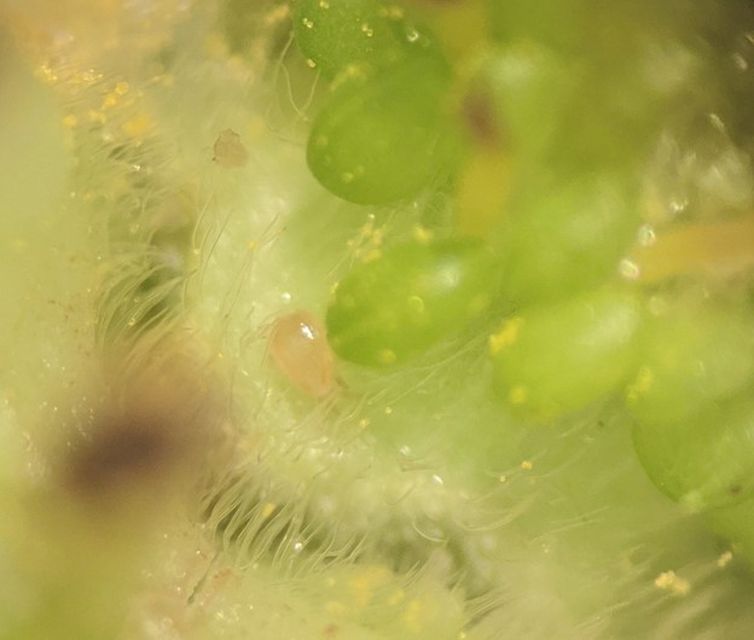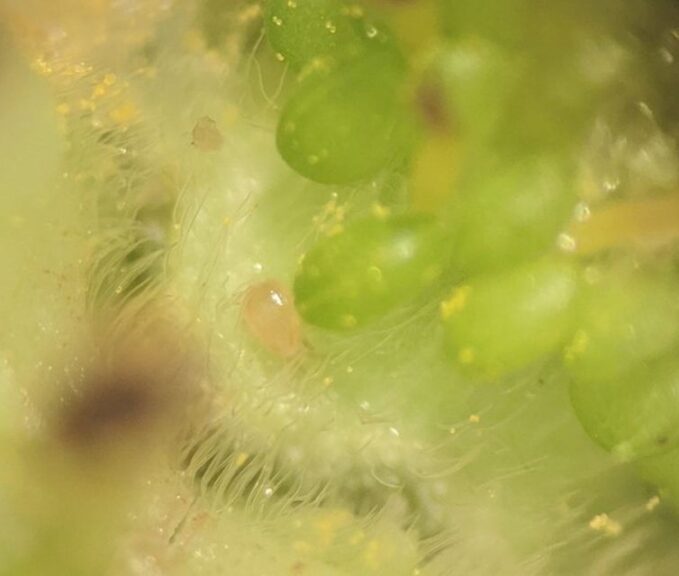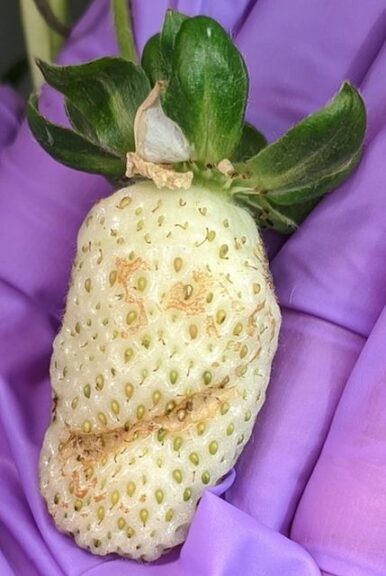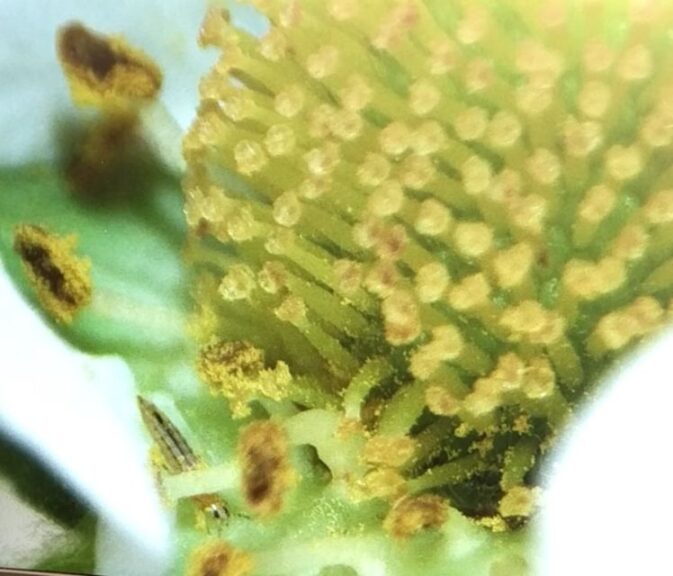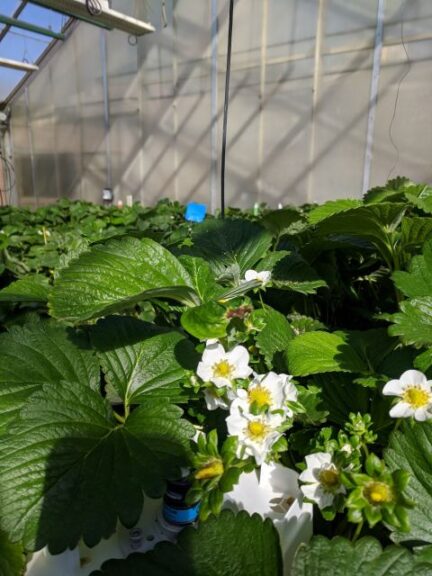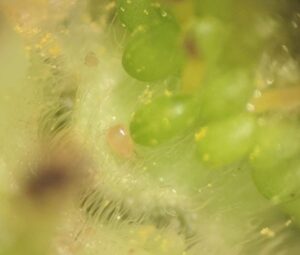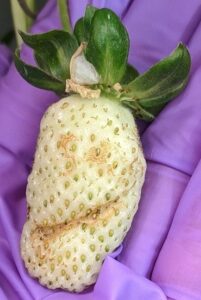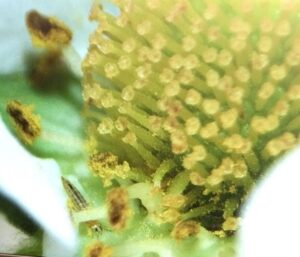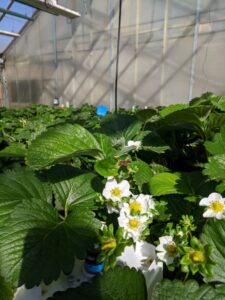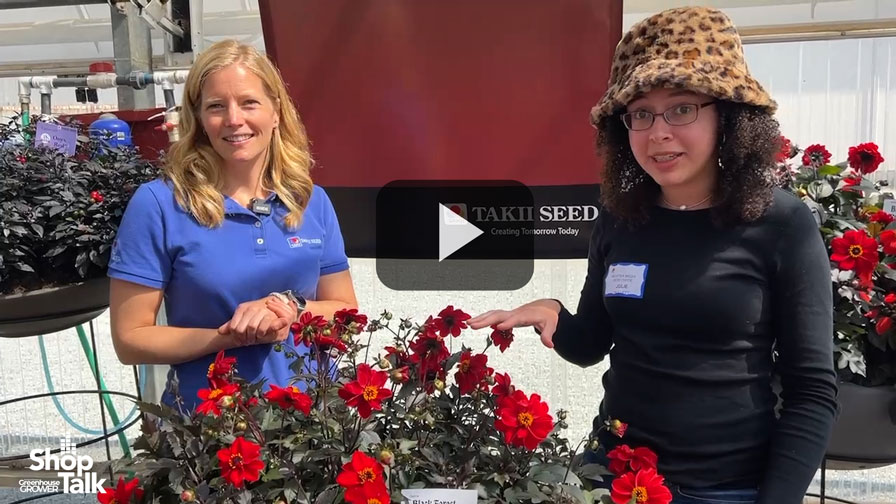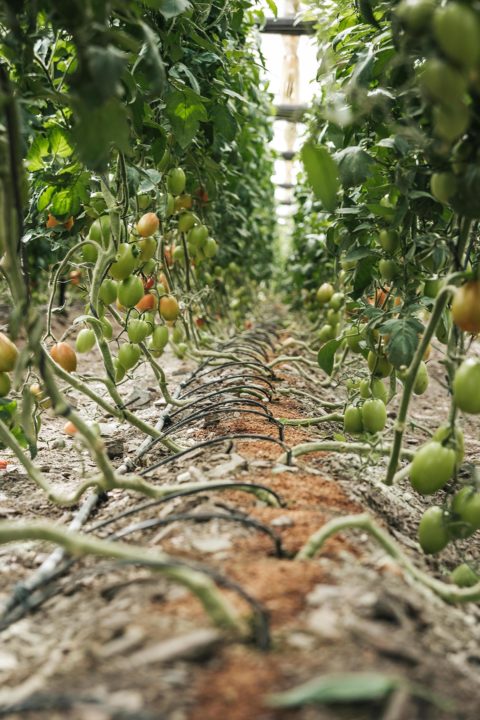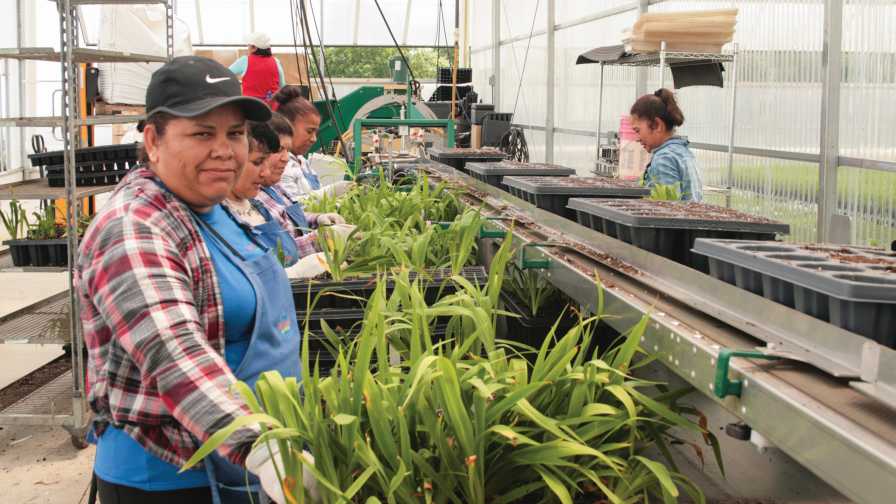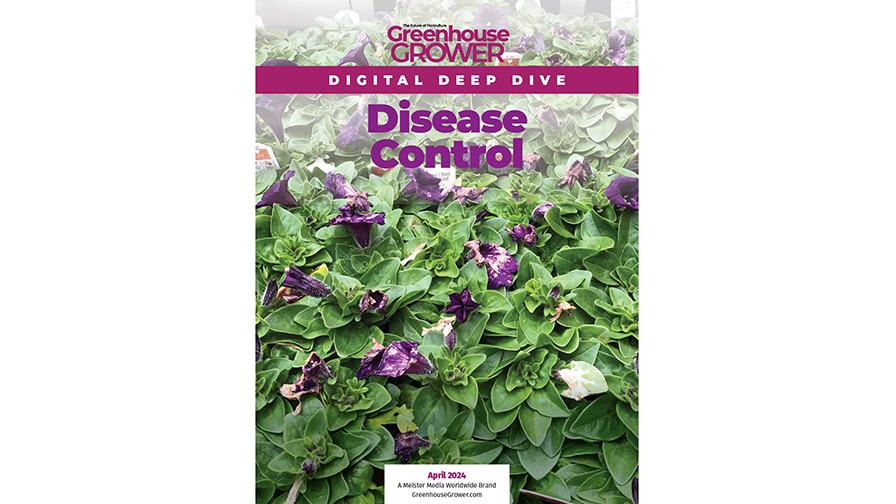Pest Management Solutions for Western Flower Thrips in Strawberries
Hydroponic, or soilless, strawberry production is a fast-growing industry sector of U.S. controlled-environment agriculture (CEA). Its production typically targets off-seasons — fall, winter, spring, and early summer. To expand markets and increase yields, growers in the Northeast and Midwest have adopted new production strategies, such as continuous production or double cropping systems.
There are two types of photoperiodic strawberries, short-day and everbearing. Their flowering response is affected by temperature and photoperiod interactions. Short-day cultivars have an obligate short-day response. In most geographical locations, the high temperatures and long days of the summer season will not allow year-round production with short-day cultivars.
Everbearing have a facultative long-day response and will produce year-round with optimal temperatures. Growers can expect repeated flowering, with gaps between flowering flushes. However, targeting a first harvest to maximize the holiday market is difficult. By using a super-forced conditioning technique with short-day cultivars, growers can overcome this problem.
Starting in mid-August, short-day strawberry cultivars are conditioned with a short-day photoperiod and lower temperatures — 16-hour nights at 57ºF to 59ºF for three to five weeks until flower primordia are confirmed. A first harvest can be expected in late November, with continuous flowering throughout the season.
Off-season strawberry production presents growers with new challenges in pest management, particularly from Western flower thrips. Thrips feed on pollen. Increases in flowering also increases thrips populations, since there is more pollen available for thrips to consume.
Pest Prevention Starts with Monitoring
The foundation of a strong integrated pest management program is prevention, which begins with inspection and monitoring of transplants. Plants that surround the production facility should also be monitored for thrips, whose small size allows them to ride air currents and easily infiltrate greenhouse screens. Placing yellow sticky traps just above the foliage and near points of entry such as doorways and vents helps to monitor a thrips invasion.
October, when anthesis and cluster development begin in off-season strawberry production, is an important time for scouting and monitoring thrips. Adults as well as nymphal stages, which are rarely seen on sticky traps, feed deep within the crop. The secretive nature of thrips does not end there. Females oviposit eggs in leaf tissue, and since pupation occurs in soil, the life stages of thrips present in the crop can remain a mystery. Hence the need for monitoring sticky cards, as higher populations of thrips on sticky cards will indicate a developing infestation.
Thrips will remain on plant tissue whenever possible, and prefer seclusion to exposure. The carbon dioxide from gently blowing on flowers or tapping flowers over a white piece of paper disturbs the thrips. They will move from their hiding places, such as the calyx of the flowers. This laborious process should be performed randomly throughout the crop. In both methods, thrips are counted to estimate populations. As little as one to two thrips per flower can mean damage to the strawberry fruit.
Brown streaks or blotches on the strawberry flower petals are early indicators of thrips. Growers should also inspect fruit for bronzing, the damage most associated with thrips. Bronzing fruit surfaces take on a silvery sheen, which makes fruit unmarketable.
Application Strategies
Biological control agents help growers stay ahead of thrips when used preventatively. Applications of the predatory mites Amblyseius swirskii or Amblyseius cucumeris should be applied at the beginning of the growing season. As temperatures and light decrease in December, the predatory mite Amblyseius limonicus is a better option since Amblyseius cucumeris becomes torpid in lower temperatures. Both agents control thrips through the second instar, before thrips drop to the soil to pupate. Soil drenches of Beauveria bassiana, and the nematode Steinernema feltiae help control thrips at this pupation stage.
Chemical control choices for thrips can be complicated. Insecticides that have translaminar and systemic movement in the plant are better choices than contact chemicals. When applied as a drench every five to seven days, the systemic action of azadirachtin provides good control of thrips, which not only feed on pollen, but pierce and feed on plant tissue. Rotating modes of action, observing short pre-harvest intervals, and considering the chemical impact on biologicals should also be factors in a chemical control program. Possible insecticides for rotation in the control of Western flower thrips include spinosad, cyantranilprole, and acetamidiprid.
Western flower thrips will be an ever-present threat, particularly during high-flowering cycles in off-season strawberry production. Developing a strong season-long integrated pest management program for thrips begins with prevention. Preventive applications of biological control agents, proper scouting and monitoring of pest populations, and careful chemical control choices throughout the growing season enhance fruit quality and yields in this emerging CEA market.




